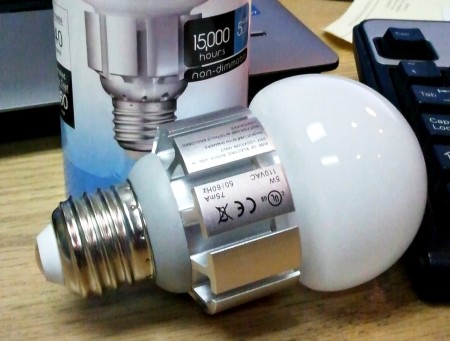Each remodeling project is unique in approach, scope, existing conditions, and underlying goals. As we look at our past year in the aggregate, however, we can get a sense of broader trends. What types of projects are people taking on? What common goals do we see developing? What do people tend to prioritize in their projects?
In 2015, we expect to see the following remodeling trends find more traction: sustainability, open spaces, and modern materials. Let’s take a look at how these may play out.
Sustainability
 While “sustainable” means different things to different people, we expect to see more and more people set sustainability as a prerequisite for home remodeling work. From energy-efficient appliances and lights to regionally-sourced and reclaimed materials, there are many ways to reduce a project’s impact on the environment.
While “sustainable” means different things to different people, we expect to see more and more people set sustainability as a prerequisite for home remodeling work. From energy-efficient appliances and lights to regionally-sourced and reclaimed materials, there are many ways to reduce a project’s impact on the environment.
Some of these measures are prompted by improved standards. Light bulbs, for example must meet increasingly strict energy use standards. For additions and major remodeling projects, exterior walls and roof must be insulated to a higher value.
Other measures are driven more by design and client goals. We can specify materials with low VOC content to improve indoor air quality, light fixtures that go above and beyond the baseline requirements, and seek out creative design solutions that minimize the amount of material sent to the landfill.
Ultimately, a remodeling project starts out with a positive baseline – reuse of an existing building or freshening of an existing space utilizes less new material than a comparable new construction project.
Open Spaces and Aging in Place
Many homes, even those constructed through the 90s, are carved up into relatively small, discrete spaces. As families grow and use needs change, they must either adapt to the home or the home must adapt to them. We expect to see more clients seeking creative solutions to fundamentally change the way their homes operate:
- Better connection between living spaces and kitchens
- Kitchens designed for gathering in addition to cooking
- Master suites, guest suites with separate bathroom
- Better connection between indoor spaces and outdoor environments

Wood tops can be plane-sawn, edge grain, or end grain.
Further down the “adaptation” path, we will likely be undertaking more aging in place projects that allow for families with varying physical abilities to live comfortably together for longer. Wider doorways, planning for future accessibility modifications, zero-threshold showers, and other universal design strategies can accomplish this goal.
Modern Materials
Material advancements allow for a remodeling project to take on a character of its own. The palette of options grows every day and, while there is always space for traditional materials, we expect that clients will increasingly seek unique materials and one-of-a-kind design. From the dizzying array of countertop materials to the customization allowed by computer-aided machining, the universe of options is limited only by the imagination (and of course budget).
Use of new materials and methods necessitates a degree of trust in your designer and builder. This is where true craftsmen excel – they are able to apply their knowledge of buildings and building science to new situations and arrive at a great solution that meets the client’s functional goals while pushing the aesthetic envelope.